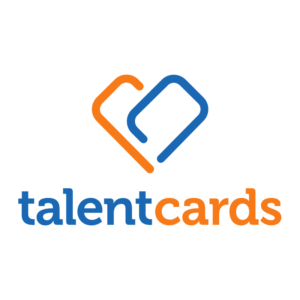7 Ways To Build An Accessible Mobile Learning Plan
No one argues that training has big benefits for employees and organizations alike. But with an increasingly mobile workforce and a global majority of non-traditional office employees, it can be a challenge to make training available to everyone.
Mobile learning is an elegant solution for effective training. It also presents an opportunity to make training accessible to all employees.
Why Mobile Learning?
Mobile learning, or mLearning, is training that can be done via a mobile device (e.g., smartphone or tablet). It’s more versatile than typical online training, which may still require the learner to be at a desk or tied to a laptop. There are plenty of reasons for going mobile with your training strategy.
- It’s flexible
Today’s employees face busy schedules at work and at home. Accessible training via mobile device lets people log on during their commute, at home, or whenever they have a few minutes of downtime. Mobile learning makes training accessible from anywhere, at a time when it’s convenient for all types of learners. - It’s scalable
It can improve your training’s reach, literally putting it in the hands of workers at remote locations and making it accessible for those who might otherwise not be able to participate. It presents an elegant solution for deskless workers like nurses, teachers, salespeople, construction workers, truck drivers, and more. - It meets people where they are
It’s a great solution for anyone who prefers to learn on the go. As millennials and Gen Z increasingly join the workforce, employees are getting more and more tech-savvy. More employees have mobile technology available and are comfortable using it. People turn to their smartphones regularly to find information and answers to questions.
Clearly, mLearning has its advantages. But for all its perks, mobile learning presents some unique challenges. Understanding these can help you know how to overcome them to make your training accessible and user-friendly. And the easier it is for people to access your courses, the more successful your training strategy will be.
The Challenges Of Mobile Learning
It’s good to be aware of the potential obstacles learners face with mobile learning so you can address them up front and not disrupt the learning experience.
- Non-compatible content
Classroom training and even content created for online learning don’t always translate easily into a mobile format. File sizes and types supported by computers may not work on smartphones and tablets. Without an easy way to transfer content to a mobile format, you’re left creating a new version of the training for mobile devices. This can lead to discrepancies with other existing versions as you juggle maintaining multiple versions. - Slow internet connection
While mLearning provides freedom for people to learn in the environment that suits them, it also means you don’t have control over that environment. Employees using home WiFi or commuter options may not have the bandwidth or speed they’re used to at the office. Loading times and consistent connections may vary and disrupt the learning experience. - Different operating systems
While most workers may have access to smartphone technology, that doesn’t mean that tech is going to be the same or run smoothly on each device. Software installation requirements vary from system to system, and file format support can too. - Fewer available options
Even though its popularity is on the rise, mobile learning is still a newer delivery option. Because of this, there aren’t yet as many options for ready-made software or solutions as for online and virtual training.
These challenges pose possible obstacles to helping your employees engage with training. But with planning and a sound strategy, you can create a mobile learning program that works for all learners.
How To Build An Effective Mobile Learning Program
With the right attention to technical and content-related issues, you can overcome these obstacles. The following tips can help you ensure your mobile learning program is accessible and user-friendly.
Make It Micro
Microlearning is the standard for mobile learning. It consists of short, bite-sized lessons that can be completed in a matter of minutes. Each lesson is focused on one concept. This quick-burst learning strategy is convenient for busy schedules. Employees can access it when they have time and complete a lesson before things pick up again.
The format also has advantages for increasing retention. According to research, microlearning on mobile apps can actually increase learning transfer. The convenience and focus of microlearning mean employees are more likely to engage with and recall the content.
Use A Mobile-First Platform
A mobile training platform designed specifically to help you create, manage, and administer microlearning makes building and implementing training fast and affordable. A good mobile LMS takes the guesswork out of getting your content online and into employees’ hands. It’s built to be easily navigable and easy to manage on the organization’s side.
Keep Your Design Simple
Design is not only about branding. It’s also a consideration for making your training more accessible and making it work on the small screen.
You’ve already got a lot going on on a very small screen. Help learners focus by decluttering the design. Use clean, readable fonts. Don’t import graphics with minute details that may be lost on smaller devices.
Build For Scrolling
And while you want to break the content up into smaller lessons, it doesn’t mean breaking it up into lots of screens. Make your format easier to use by limiting the number of clicks required to navigate through a lesson. People are used to scrolling through content on their devices, so make sure the main points are visible. Use noticeable headers so each section and its purpose are clear.
Keep Content Focused
Make copy concise. As mentioned, people are used to scrolling and finding answers quickly. Keep your text to the point, breaking it up with a clear section for each point. Give each point a heading that communicates what learners will find there.
This applies to videos too. Video is a fantastic medium for making a point and evoking emotion. It can make content more memorable. But too much of a good thing makes it harder to use. Longer videos mean larger files, which means longer loading times or files that won’t play. Stalled lessons disengage learners and disrupt learning. Make sure the main content is front and center—easy to find and easy to use—for truly accessible training.
Use Format-Friendly Interactive Elements
Interactive learning is one of the greatest features of online training, and there’s no reason it shouldn’t be the same for mobile learning. You can use multiple-choice quizzes, drag-and-drop exercises, and clickable hotspots to engage learners. Just make sure those features work for smaller screens. Reduce the number of clicks needed. Minimize drop areas in drag-and-drop questions so they don’t interfere with scrolling.
Ask For And Implement Feedback
Lastly, monitor your training's effectiveness regularly. As your training strategy expands to include mobile learning, new needs and challenges will arise. Survey employees after training sessions and reach out to get a sense of what’s working and what’s not. Prepare to address issues by capturing them as you go.
Your mobile LMS should then make it easy to adjust content or design and implement new features as needed. Seamless improvements will keep your strategy moving forward and easy to access.
Create Accessible Training With mLearning
Learning is—and should be—for all. Employee development enhances skills, builds employee confidence, and increases your organization’s success. And just like the business landscape, training needs are evolving.
More frontline and deskless workers, more employees from younger generations, and more pervasive use of mobile technology present an opportunity to use mobile tech to reach employees. And with the right tools, you can keep up with today’s training needs and make sure no one is excluded.










